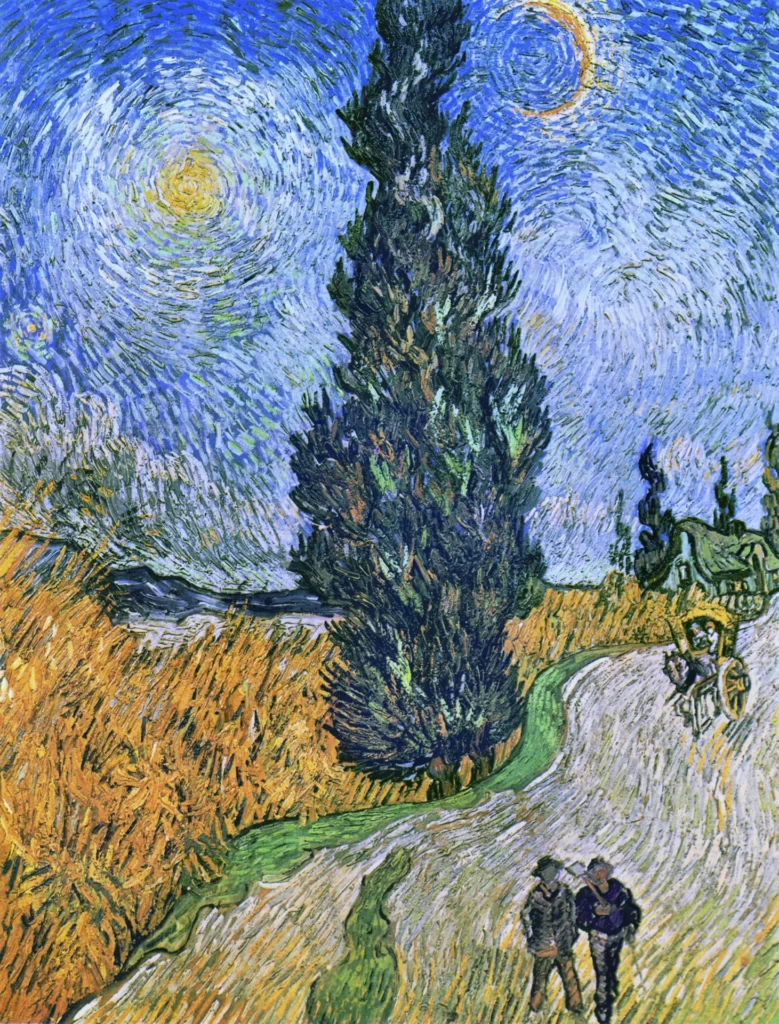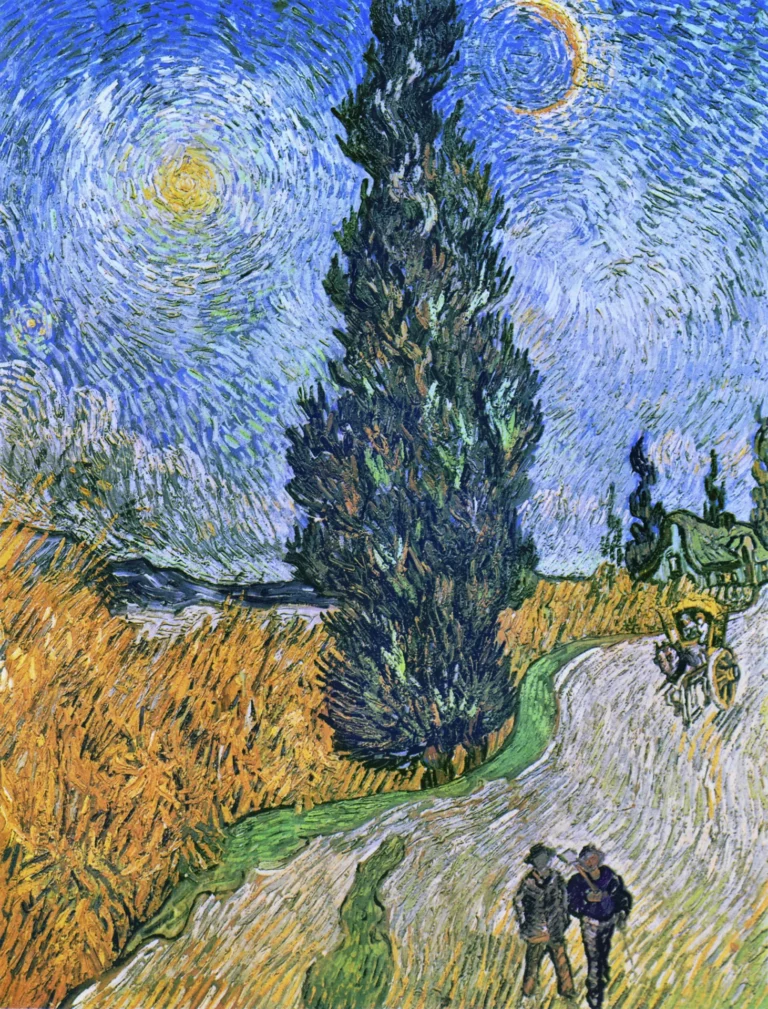Road With Cypress And Star (1890)
Road with Cypress and Star is an iconic painting by Vincent van Gogh, created during his stay in the asylum of Saint-Rémy-de-Provence in May 1890. With its dramatic composition featuring a twisting road, towering cypress tree, and a celestial sky filled with a crescent moon and planets, Van Gogh showcases his vibrantly emotive style. The painting conveys deep themes of companionship, mortality, and the eternal cycle of life, characteristic of the artist's late, introspective works.
May 1890
About the Artwork
This painting emerges from one of the most poignant moments in Van Gogh's life. While staying at the asylum in Saint-Rémy-de-Provence, he grappled with mental health issues, seeking solace in nature and the night sky. The swirling colors and dynamic brushwork symbolize the emotional turmoil he faced, yet also express a profound connection to the universe. The cypress tree, often associated with death, serves as a vital emblem in this work, anchoring the composition and dividing the celestial elements. This painting was inspired by Van Gogh's earlier works, reflecting a matured artistic voice that sought to blend personal experience with spiritual and cosmic themes. It marks his final exploration of starry night themes before his untimely death, capturing both his isolation and longing for companionship.
Did You Know
Liked what you see? Add it to your collection.
Enjoyed reading? Share it.
... continued
Location and Medium
The painting is an oil on canvas, measuring 92 cm x 73 cm, and it is housed at the Kröller-Müller Museum in Otterlo, Netherlands.
Composition and Elements
The painting depicts a night scene with a winding country road, a large cypress tree dominating the center, and a starry sky. The sky includes a crescent moon and two planets, Mercury and Venus, although they are depicted in a mirror image. The road is lined with tall yellow reeds and sharply outlined trees, and there are several figures walking along the road, including a horse-drawn carriage in the distance.
Symbolism and Themes
The cypress tree was a recurring motif in Van Gogh's work, often symbolizing death and eternity. In this painting, the cypress is described as an "obelisk of death" and is seen as dividing the symbols of the old (the evening star) and the new (the emerging crescent moon). The painting reflects Van Gogh's feelings of impending death and his need for companionship, as indicated by the two travelers on the road. It also depicts human life in the context of infinity and eternity, with the cosmic elements adding a sense of a sentient universe filled with love.
Artistic Style and Influences
The painting exemplifies Van Gogh's post-Impressionist style, characterized by vibrant colors, dynamic brushstrokes, and a sense of emotional and spiritual depth. The use of bold, impasto strokes for the foliage and the expressive lines and colors are typical of his late period. The painting was influenced by Van Gogh's earlier thoughts on painting nighttime scenes, which he had considered since his stay in Arles in 1888. It also shares motifs with his earlier work, "The Starry Night," but with a more secular theme.
Historical Context
Road with Cypress and Star was one of the last paintings Van Gogh made in Saint-Rémy-de-Provence before he moved to Auvers-sur-Oise, where he would eventually pass away in July 1890. It is considered a 'last attempt' at a star painting, as mentioned in a letter to Paul Gauguin.










